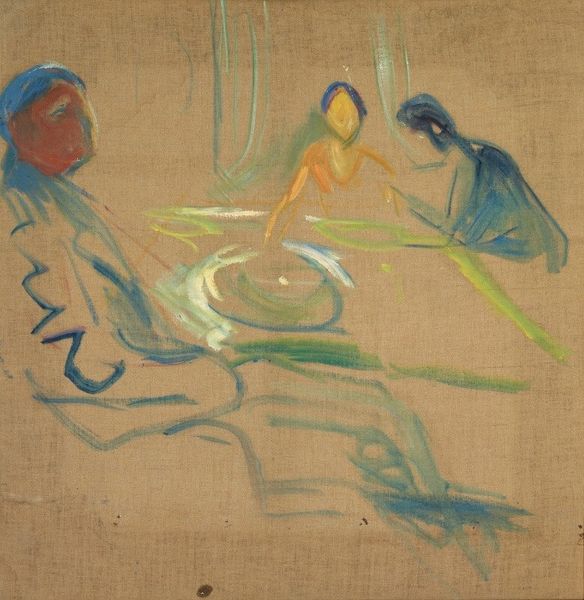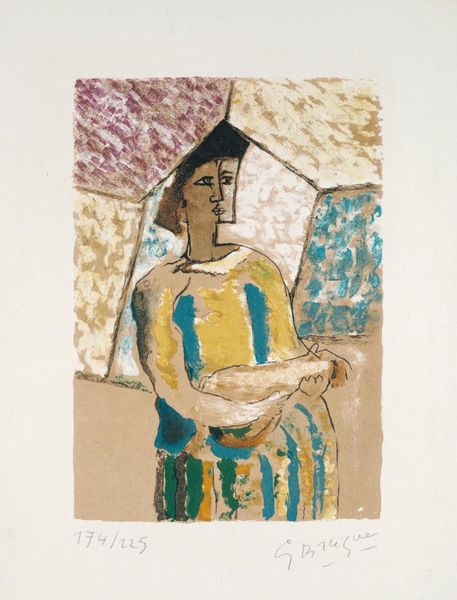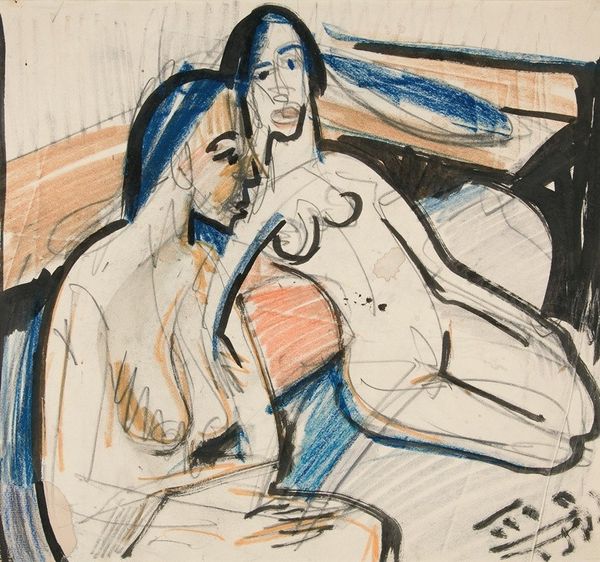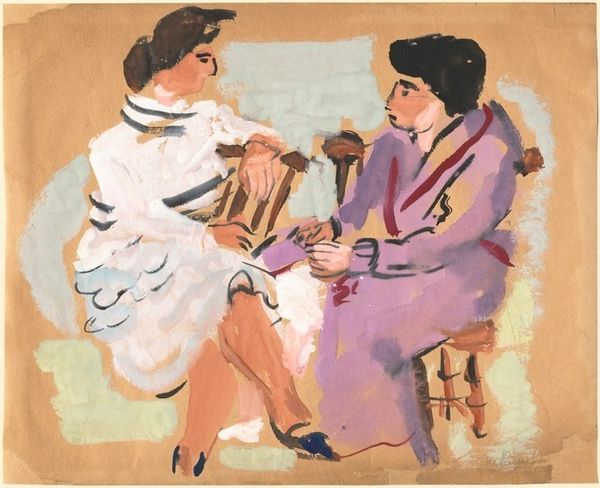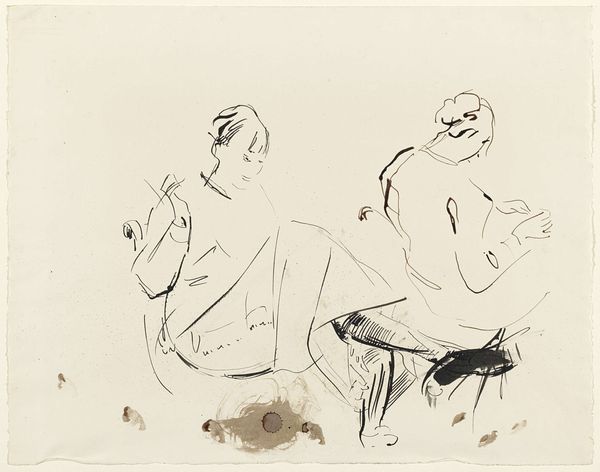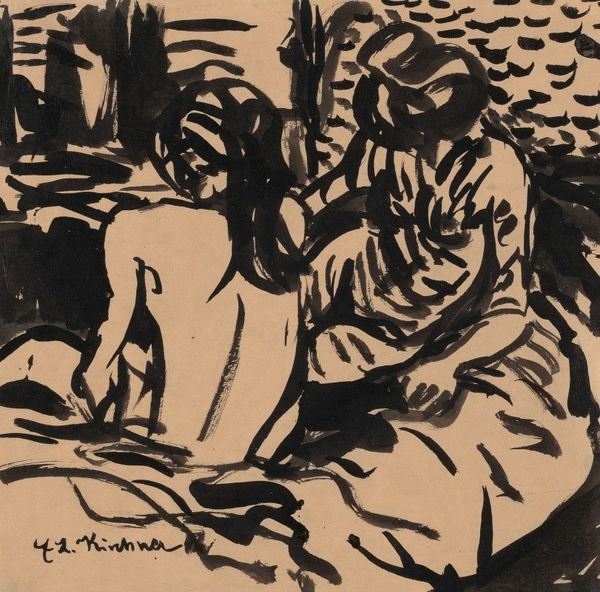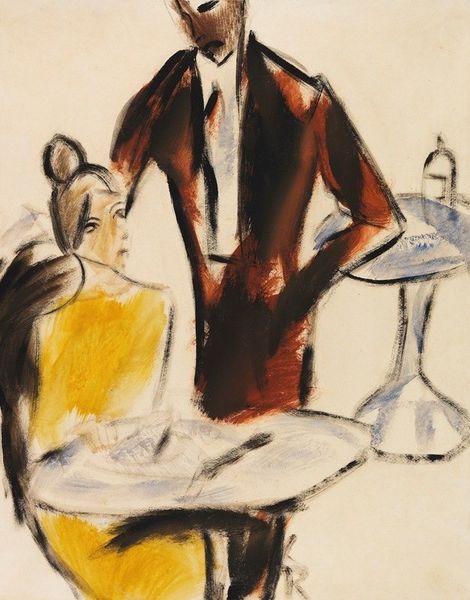
Copyright: Public Domain: Artvee
Curator: This is "Two Women at the Table," created by Edvard Munch between 1915 and 1917, a watercolor piece with distinct expressionistic flair. Editor: My first impression is a sense of introspection. Despite being together, there's a palpable quietness, almost a melancholy, hanging in the air around these figures. Curator: Munch often employed female figures to embody complex psychological states. Notice how the downturned gaze and shadowed features convey something deeper than a simple portrait. Do you see how that resonates with cultural depictions of women, their bodies and minds often a site for societal projection? Editor: Absolutely. The colors too—muted greens and purples—reinforce this somber mood. Considering Munch’s own life, marked by trauma and illness, I wonder if these women are stand-ins, grappling with internal struggles mirrored by the socio-political upheaval of that era. Curator: That's insightful. Symbolically, a table often represents communion, gathering, but here, it feels more like a barrier, isolating them even as they share a space. Perhaps hinting at the unfulfilled promises of social progress and emancipation. Editor: I agree. It reminds me how so often women's stories are confined within domestic spheres, their voices unheard. I keep thinking about the artist's life during that time and how we are seeing his world though the eye of two women. There are always so many filters to get at a particular truth! Curator: There’s a vulnerability inherent in the watercolor medium itself, allowing for translucence and layering which underscores the psychological states being represented here. Editor: I see them both so entrenched and lost. How we place our feelings into everything is rather potent here, no? Thanks to the expressive strokes we have an intimate look at each character. This viewing gives space to consider a range of questions from a feminist view. Curator: Agreed, this work encapsulates the zeitgeist of a turbulent period while presenting enduring considerations of identity, and collective silence through art. Editor: Ultimately, “Two Women at the Table” becomes a stark contemplation of identity and how each of the female figures plays into history as witnesses to pain. Thank you!
Comments
No comments
Be the first to comment and join the conversation on the ultimate creative platform.
